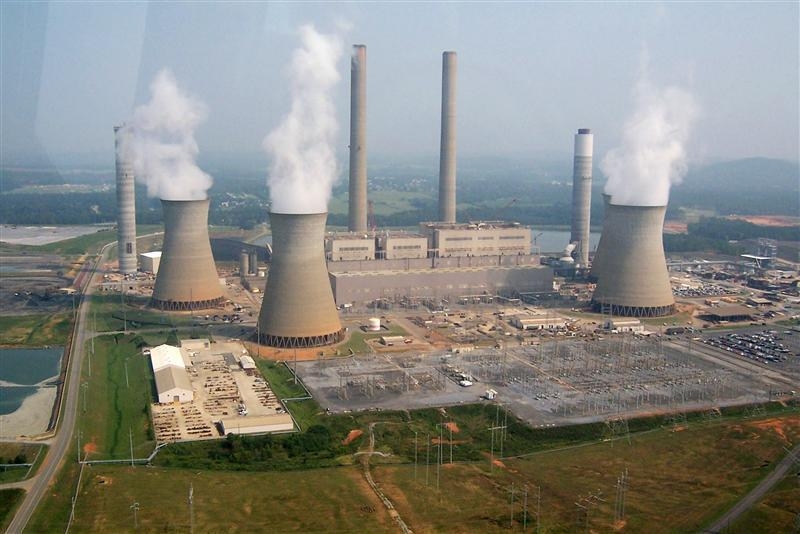It is a classic case of one ministry proposing and another disposing. A new analysis of the coal-based power sector by Centre for Science and Environment (CSE) indicates that the sector – with active help from the Ministry of Power (MoP) and the Central Electricity Authority (CEA) – is all set to avoid complying with the new emission norms that will come into effect shortly. These new norms were enacted by the Union Ministry of Environment, Forests and Climate Change (MoEF&CC) in December 2015 in view of the sector’s massive contribution to air pollution and its huge water withdrawal.

Of the total emissions from the industrial sector, the power sector alone contributes 60 per cent of the PM (particulate matter), 45 per cent of the Sox (sulphur dioxide), 30 per cent of the NOx (nitrogen oxides) and 80 per cent of the mercury emissions.
Though the industry was given two years to comply, there has been very little progress so far. The norms come into effect from December 2017, but the CEA is now recommending that plants be given another five years (which means the deadline should be extended from 2017 to 2022) to comply with the new norms. CSE, however, has recommended to the MoEF&CC and the Central Pollution Control Board (CPCB) not to accept the fresh timelines proposed by power ministry and the CEA.
Chandra Bhushan, Deputy Director General, CSE, said: “Another five years to meet these standards is unacceptable. Power plants have already wasted two years doing virtually nothing. It is important to push for ambitious timelines for compliance with the new norms. The environment ministry needs to come up with a tight implementable deadline and a concrete roadmap for each and every plant to ensure compliance.”
He added: “Implementing the new norms will provide significant environmental benefits — major pollutants from coal-based power plants such as SOx and NOx will be cut by 70-85 per cent.”
The MoP and CEA have consistently objected to these norms and their deadlines. They have supported the industry in its stiff opposition to these norms.
“The CEA’s own reports show that issues raised by the industry such as lack of technology suppliers, suitability of technology for Indian coal, high capital costs, and tariff impact of the pollution control technology measures can be easily managed, and are not serious impediments. It is inconceivable why the CEA and the ministry has still done very little to oversee and push implementation of the new norms,” said Priyavrat Bhati, Programme Director-Energy, CSE.
CEA’s 2022 plan – glaring weaknesses
The plan submitted by CEA to implement the standards by 2022 suffers from many shortcomings:
- There is no clarity on the pollution control technology needed by plants. Most plants have done very little to even assess their technology needs or the investment required, let alone begin the projects to install pollution control equipment. For instance, the CEA is asking all plants to install FGD (flue gas desulphurisation) to control SOx emissions. CSE’s analysis shows that it is not required for smaller and older units.
- The plan is heavily back-loaded. Most plants will do nothing for the next two-three years. They will start putting equipments only from 2020 onwards. There is a major risk that in 2020 the sector will again ask for an extension.
- The CEA plan is not backed by written commitments from power stations to install new equipment.
What CSE has proposed instead
CSE recommends that an aggressive timeline needs to be pursued, considering the gravity of the problem. It has also proposed that plants located in densely or critically polluted areas must be prioritised. According to CSE’s proposal:
- CEA’s own report suggests that about 65 per cent of the capacity meet PM standards. These plants should produce evidence of compliance by December 2017. However, if some of the plants exceed the norms by a small margin, they could do minor retrofits to meet PM norms by March 2018. The remaining one-third capacity should meet PM norms by March 2019.
- About 50 per cent of the capacity is estimated to be complying with NOx norms based on emissions data from CPCB and industry experts. The remaining can meet the norms during annual maintenance over the next two years by December 2019.
- About 50 per cent of the capacity should meet SOx norms by December 2019 and the remaining, by December 2020.
“Our analysis shows that these are achievable. But to ensure that there are no further delays, the environment ministry should back these timelineswith penalties and bank guarantees,” said Priyavrat Bhati.
“These standards can be met with less than 3 per cent annual increase in the electricity tariff for the next three years. In comparison, in the last five years, electricity tariff in India has increased by 8 per cent annually. This is a low price to pay for a significant gain in environmental and health benefits,” added Bhushan.
